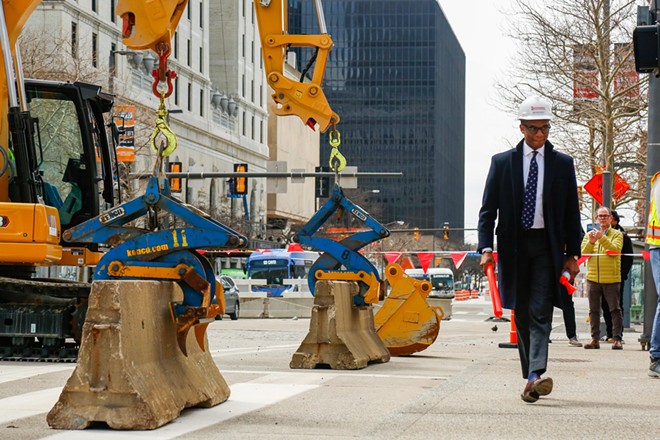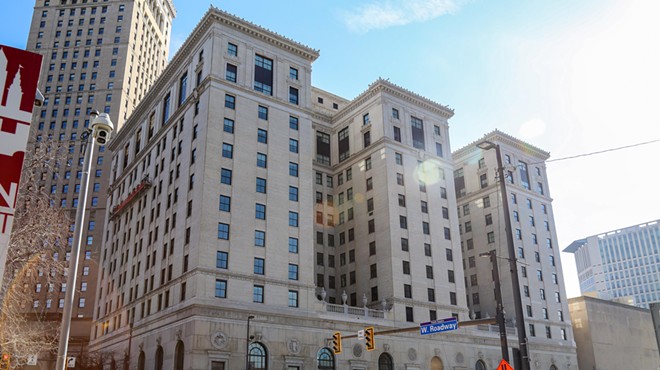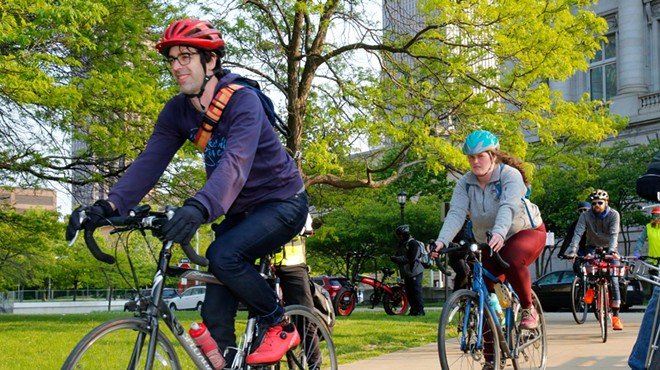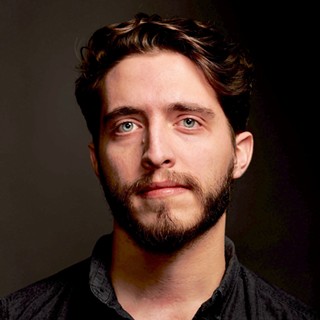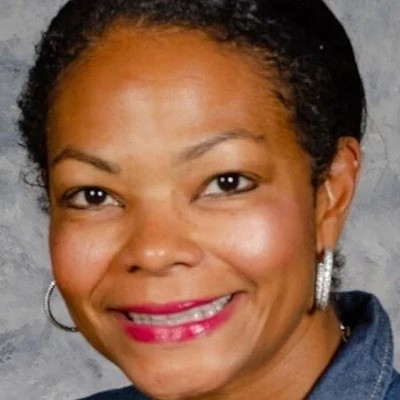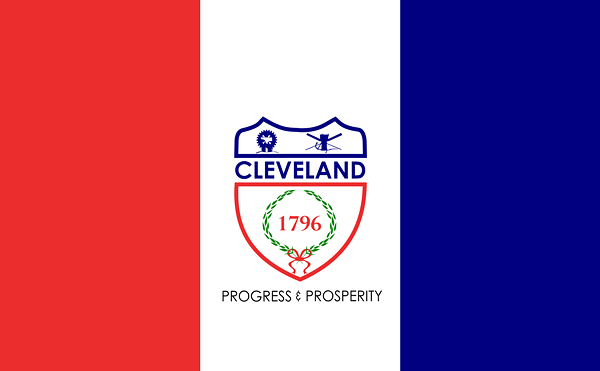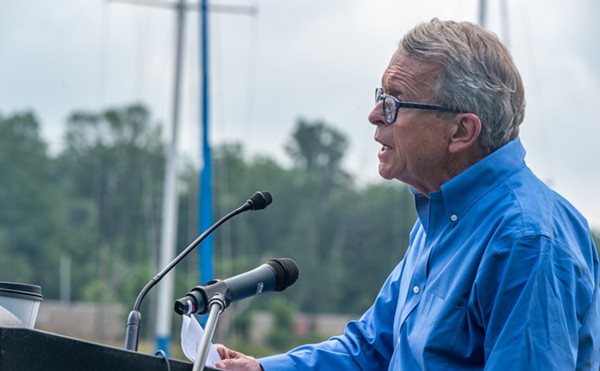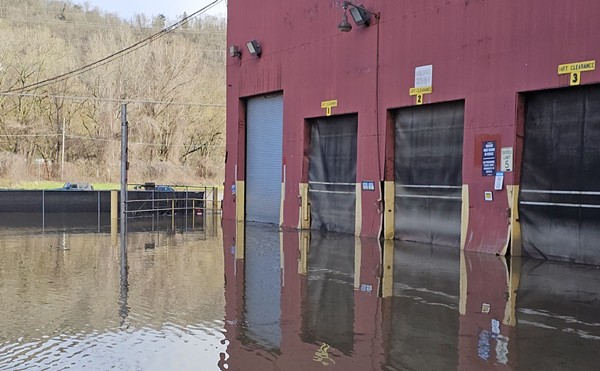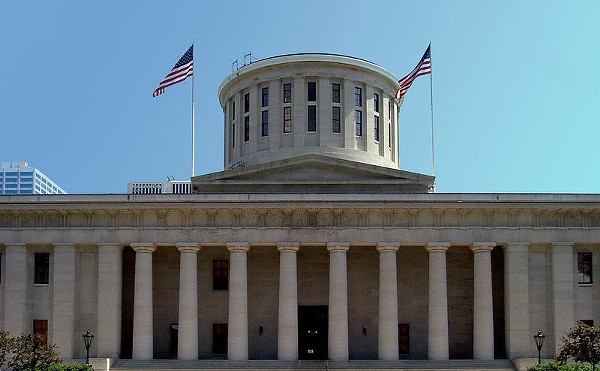No, the Browns didn't clinch a Superbowl, nor did the city solve its uneven housing crisis. But the ugly, intrusive, grey Jersey barriers that have sat for the past eight years on Public Square are gone.
And for good. (Not just for St. Patrick's Day parades and other special events.)
"Well, the day is finally here: We are removing the Jersey barriers in Public Square," Mayor Justin Bibb said at a press conference on the square's central stage Monday afternoon, in front of three bulldozers with metal clamps at the ready.
Bibb framed the ceremony—a ceremony for concrete removal!—as a milestone harkening back to a minor campaign promise in 2021. That of which segued into a lengthy legal and financial battle, over two mayoral administrations, to bring Public Square into the image of how its makeover was designed.
"We quickly realized there were a lot of things we had to do to make sure we got this moment right," Bibb told the crowd. "And sometimes you have to go slow in order to go fast and do things the right way."
The barrier removal, which was kicked off by three sounds of airhorns, marked Public Square's second phase of renovation since its first in 2016.
As was approved by the city's Design Review Board last May, the square is set to see 60 steel bollards installed in and around its area, nine that will be retractable "raptors" to let RTA buses in and out easily. Construction, expected to wrap up this summer, will also tighten the square's crosswalk in half, from 93 to 45 feet, and give it a raised platform to make crossing more inviting to pedestrians.
The makeover, eight years after James Corner Field Operations redesigned the space ahead of the Republican National Convention, brings up questions outside the realm of beautification.
There are also public safety issues separate from keeping pedestrians, buses, cyclists and cars operating without any harm.
There have been at least two shootings on Public Square since the one following Winterland's tree lighting ceremony last November.
Other than tout the city's largest police academy graduation count—52 officers—in the past few years, Bibb turned to the square's growing population count, with Sherwin William's headquarters rising literally as he spoke, along with new tenants occupying 55 Public Square to the north.
"The best thing we can do to keep Public Square safe and secure," he said, "is to have more people, more economic activity, more economic energy."
The promise of which remains a mixed bag.
Riding the high from a recent Washington Post bump (which glorified Cleveland's job "leading the nation" in office-to-residential building conversions), Bibb, along with County Executive Chris Ronayne and RTA CEO India Birdsong-Terry, framed the development boost as a natural predecessor to, well, more people just coming to hang out.
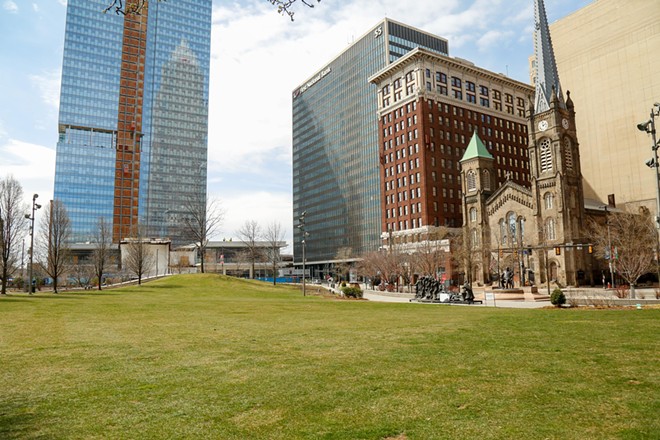
Others, namely passers-by watching the bulldozers haul concrete away, were confused at the spectacle in general.
"Really? Since 2016? Why were they put here in the first place? There's a reason, right?" Steve Harper, a Jehovah's Witness who advertises in front of 200 Public Square, told Scene as his eyes studied the bulldozers.
After Bollard Gate was explained to Harper, his thoughts aligned with that of a city planner. "I think they just need more people here. And people need things to come here for—I mean, what's really here? You know?"
Nearby to Harper, watching the same bulldozer trucks, Audrey Gerlach agreed.
"That's exactly our goal," Gerlach, Downtown Cleveland, Inc.'s vice president of economic development, told Scene. "It's not sustainable to produce big festivals on Public Square every day. But there are goals, of course, to create a regular environment of excitement and vibrancy through programming that is appropriately scaled for regular use."
And Gerlach should know. DCI will be taking over management of Public Square from the Group Plan Commission. Gerlach declined to say when DCI would take over programming, or if they would hire another general manager themselves as the current one retires.
As for the 5,000 RTA riders a day that travel through Public Square, the transit agency announced that pick-up and drop-off will take place north on Superior Avenue until June 11, when construction wraps up this summer.
And for the possibility of closing Public Square completely to buses in the future?
"All things are on the table," Bibb said.
Subscribe to Cleveland Scene newsletters.
Follow us: Apple News | Google News | NewsBreak | Reddit | Instagram | Facebook | Twitter | Or sign up for our RSS Feed

